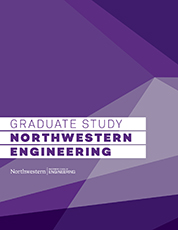Diana Jeong RoExperience Designer, BCG X

Industry: Product Design, Product
Affiliated Programs
Master of Engineering Design Innovation
Alumni Interview
Tell us what your current title is and what your role entails.
I work in Experience Design at BCG X, the technology and design unit within Boston Consulting Group. We operate at the intersection of strategy, design, and engineering—building new ventures, digital products, and large-scale transformations. I’ve supported early-stage business builds, venture pitch strategies, and digital innovation across sectors like healthcare, fintech, and consumer goods. In Experience Design, I focus on digital product design and visual communication, leading product definition, UX, and brand expression. Depending on the project, my role shifts from building design systems and interfaces to facilitating workshops, designing venture decks, and crafting visual storytelling. I act as a subject matter expert in both product and brand design, adapting to the needs and constraints of each team. One of my favorite parts of this role is how dynamic it is—every project has its own creative rhythm, and I get to help shape it from concept to delivery.
When you started EDI, did you know what industry you wanted to work in?
I came into EDI with a general interest in human-centered design, but no specific industry path in mind. That ambiguity turned out to be a strength. EDI challenged me to explore how design shows up in vastly different contexts—from physical systems to digital tools to complex services. Through that breadth, I gained clarity in my passion for digital product design and the confidence to deepen my expertise in that space. EDI’s multidisciplinary foundation helped me see design as a powerful connector between disciplines, industries, and people. That exposure ultimately led me to a role where I bring design to zero-to-one ventures, corporate innovation, and digital transformation.
Tell us about an EDI course that made an impact on you.
Designing Product Interactions with Craig Sampson and Nick Marchuk left a lasting impact on me. The course reframed my understanding of “interaction”—not just as usability, but as an intentional communication between artifact and user. We built functioning, coded physical prototypes that expressed emotions, reactions, and ideas through movement and form. I’ll always remember the joy of creating a sculptural jellyfish that responded to human touch, or a box that embodied anticipation. That course taught me to design not just for function, but for feeling—to ask: what do I want someone to experience, and how can I shape that? That mindset is now central to everything I create, whether it’s a screen, system, or story. It’s a reminder that great design isn’t just elegant—it’s intentional, emotional, and deeply human.
What is one lesson you learned during your EDI journey that has stuck with you?
One lesson that stayed with me was the importance of storytelling—especially in short, high-pressure moments. I remember the fast pace of midterms and finals, where weeks of work had to be distilled into five-minute presentations. That environment taught me how to communicate key decisions clearly, persuasively, and with purpose. I learned that good design work is only as impactful as the story behind it—and that confidence doesn’t come from rehearsed answers, but from grounding your ideas in research and user insight. That rigor still serves me today. Whether I’m in a venture pitch, a client meeting, or a design critique, I return to that lesson: clarity, logic, and empathy are what carry your voice. In a world full of opinions, the ability to connect the dots and speak from insight is what sets great designers apart.
What was your EDI thesis project and what inspired you to pursue it?
I knew early on that I wanted my thesis to explore math anxiety, something I personally struggled with during undergrad. I studied math because I enjoyed it, but the rigor of college-level theory created insecurity and doubt in my abilities. While studying design, a core philosophy stuck with me: there’s no such thing as user error—only bad design. That shifted my perspective. I began to see math not as a talent issue, but a design challenge. I explored how we might redesign the learning experience itself—building confidence through structure, feedback, and emotional safety. I drew inspiration from programs like marathon training, where the difficulty is embraced, but the path is clear and supportive. My work included interviews with students, educators, and curriculum designers to better understand how to create a more empowering relationship with math with the goal of redesigning the challenge, not the student.
What advice do you have for an EDI student interested in working in your industry?
EDI prepared me perfectly for the ambiguity and fast pace of my current role. The blend of hands-on building, systems thinking, and communication made me a better product designer—and more importantly, a better collaborator. If you’re unsure what kind of designer you want to be, that’s okay. You don’t need to have an answer yet. My advice: lean into the range of experiences EDI offers, even ones you think aren’t “your thing.” Each perspective you gain sharpens your instincts. Many students feel they aren’t “real” designers yet, but trust me—if you’re asking hard questions, crafting thoughtful responses, and iterating with intention, you already are. Focus on building strong stories, working across disciplines, and reflecting on your process. You’ll carry those habits with you long after graduation, no matter where you go.

